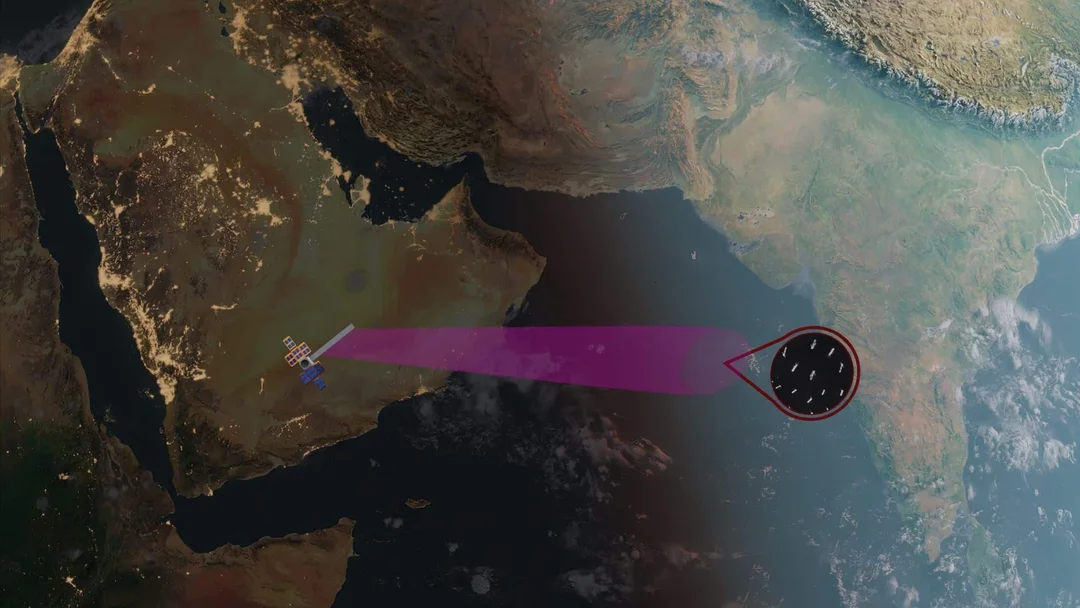
Space-Based Maritime Surveillance Heats Up Amid Rising Geopolitical Tensions and Illegal Activity
The world's oceans are becoming increasingly turbulent, driving a surge in demand for space-based maritime surveillance. A new report from Quilty Space highlights that rising geopolitical tensions, economic vulnerabilities, and illegal maritime activities are fueling this growth.
Maritime domain awareness (MDA), the comprehensive effort to monitor ships, their cargo, and activities, is now more critical than ever. According to the report, timeliness is paramount: "In maritime domain awareness, timeliness is often the deciding factor between actionable insight and stale data."
Key drivers for this increased demand include:
- Geopolitical Instability: Incidents such as Houthi attacks in the Red Sea and Chinese naval assertiveness in the South China Sea are disrupting global shipping networks.
- Piracy: Increased piracy off the coast of West Africa poses a significant threat to maritime security.
- Climate Change: Bottlenecks like the Panama Canal drought further strain global shipping routes.
- Illegal Fishing: Nations are increasingly leveraging space-based intelligence to combat illegal fishing, particularly by China's distant-water fleets.
While more satellites are being launched, a critical challenge remains: latency. Users expect maritime intelligence within 30 minutes, but delays of two hours or more are common, rendering the data useless. This is especially problematic when tracking "dark ships" involved in illegal activities.
Innovation in Onboard Processing:
Companies are innovating to address these challenges. Onboard processing, where satellites analyze radar and other signals in space, shows promise. MDA Space's Chorus constellation, scheduled to launch its first satellite in 2026, will process data in orbit for rapid intelligence delivery.

Layering Sensors for Comprehensive Surveillance:
Traditional ship tracking relies on the Automatic Identification System (AIS), but its vulnerability to spoofing has led to a "tip and cue" model. Radio frequency (RF) detectors identify suspicious signals, triggering imaging satellites to capture visual or radar data. Low Earth orbit constellations with various sensors enable multi-layered surveillance.
NGA Taps Commercial Solutions:
The U.S. defense and intelligence agencies are turning to commercial innovation to address maritime intelligence gaps. The National Geospatial-Intelligence Agency (NGA) has extended Orbital Insight's pilot contract for maritime surveillance capabilities.
PierSight Gains Momentum:
Space-tech startup PierSight has secured an additional $8 million in funding to advance its constellation of Synthetic Aperture Radar (SAR) and Automatic Identification System (AIS) satellites. This funding will support the company’s expansion and hiring. These satellites are designed to provide continuous, all-weather maritime surveillance. PierSight successfully launched its technology demonstration satellite, Varuna, in December 2024, and plans to launch its first commercial SAR + AIS satellite in mid-2026.
Investment in Maritime Intelligence:
CE-Ventures and Sustainable Ocean Alliance (SOA) are among the new investors, recognizing the critical role of maritime intelligence in addressing challenges like illegal fishing and marine pollution. PierSight is also developing a maritime analytics platform, MATSYA, and a drone-borne SAR system, both slated for commercial availability by Q4 2025.
As Quilty concludes, "Achieving comprehensive maritime domain awareness demands fusing data from both space and terrestrial sources and integrating multiple sensor types. No single sensor platform can capture the full picture alone."
What are your thoughts on the increasing reliance on satellite technology for maritime surveillance? Share your opinions and insights in the comments below.